Arlo Go Review
Arlo Go Review
A smart camera with built-in 4G
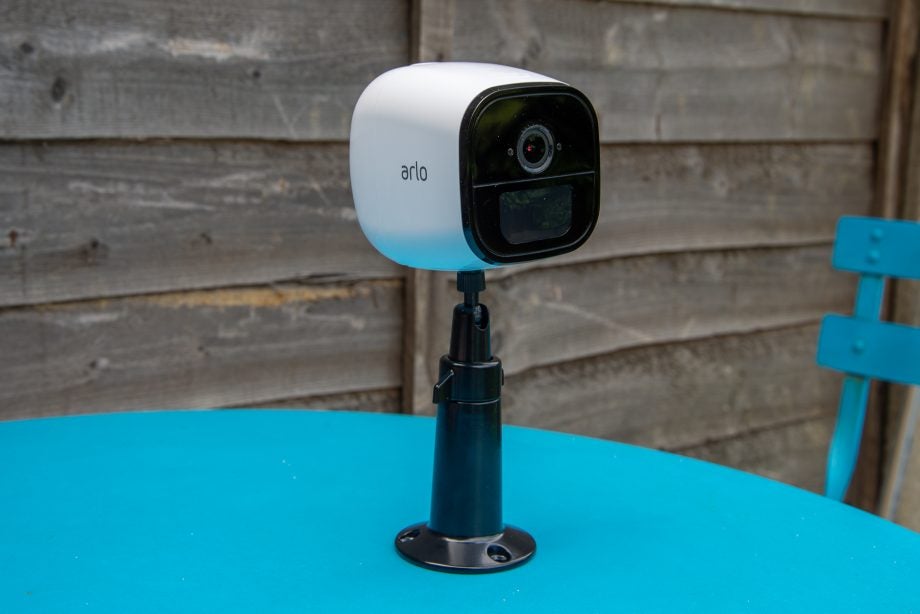
Verdict
Running over 4G via the internal SIM card, the Arlo Go is a security camera that can work where others can't, so is ideal for use on an outbuilding, caravan, motorhome or even a boat. It's powerful and easy to configure, and the 720p resolution is good enough during the day, although video is a touch soft at night. It's frustrating that there's no Wi-Fi option for use when near a decent wireless network, and the price is a little high; still, if you need security coverage wherever you go, the Arlo Go does a great job.
Pros
- Works practically anywhere
- Excellent control over when the camera can record
- Upgrade option to cloud activity zones
Cons
- Expensive
- No Wi-Fi
Key Specifications
- Review Price: £326
- Indoor/outdoor 4G camera
- 90 x 70 x 78mm
- 720p resolution
- 130-degree field of view
- Cloud, microSD card recording
- Nightvision
- Battery powered
- Google Assistant, Amazon Alexa support
Most wireless security cameras have to be within range of your wireless network to work, which is great for at home, but what about when you’re out of range and want to keep an eye on your car, caravan, tent or outbuilding? That’s where the Arlo Go comes in, with its integrated LTE network connection giving you the option to monitor wherever you get a signal.
This flexible approach to security means that you can take your camera anywhere, installing it inside or out, but the high price and need for a 4G subscription makes it more of a niche choice.
Arlo Go – What you need to know
- Installation: Insert a data SIM and place the camera where you want and you’re good to go, although it would be better if you could at least configure the camera via Wi-Fi. A flexible mount that can be screwed to a wall is provided in the box.
- Detection performance: A PIR sensor is used to pick up movement, although you can plug the camera in if you want proper activity zones. For battery-powered mode, there are optional cloud activity zones to reduce the number of notifications that you get.
- Image quality: The 720p resolution is good enough to see what’s going on. Image quality is better during the day and a bit soft at night.
Related: Best security camera
The Arlo Go has free cloud storage, although you still need to pay for 4G
In the UK, the Arlo Go can be bought as a standalone camera where you provide your own data SIM, or you can buy it through Vodafone, paying £4 per month for a data subscription. There’s no right or wrong way to go about it, but if you’re planning on using the camera on a more ad-hoc basis, say protecting a caravan or boat when you’re on holiday, you might be better off buying a PAYG SIM and topping it up when you need to use it: Arlo says that the camera uses around 1GB of data per month.
Configuring the camera means using the Arlo app, which is also used to control the other cameras in the line-up, including the 4K Arlo Ultra. To get the Arlo Go hooked up, you have to have a data SIM installed and ready to go, as this model doesn’t have Wi-Fi. That’s a shame, as a Wi-Fi backup option for when you are at home would make the Arlo Go multi-purpose and give you a few configuration options.
The Arlo Go ships with seven days of free cloud storage for your clips on the Arlo Basic cloud plan, which should be good enough for most people. For backup, there’s also a microSD card slot (up to 32GB) in the base of the camera, which is handy in case you’re out of mobile range.

As well as a SIM, the camera takes a memory card for local recording
While the app makes it easy to find footage saved to the cloud, letting you filter by event, data and camera (if you have multiple Arlo devices) there’s currently no option for browsing recordings made to the microSD card, so you have to remove it and plug it into a computer.
The Arlo Go is flexible enough to place anywhere but you might want to permanently power it
While the basic cloud plan is useful, in its default setting running off its internal battery, the Arlo Go uses its PIR motion sensor to detect movement, recording everything that happens in front of it. Placement is crucial, as putting the Arlo Go in high traffic areas means that you can get a flood of alerts as well as draining the battery fast.
Arlo provides the outdoor power cable with this model, which lets you permanently power the camera inside or out. As well as not having to worry about draining the battery, when the camera is powered it also lets you configure activity zones by drawing rectangles using the app. Only motion inside a zone will trigger a recording and notifications.
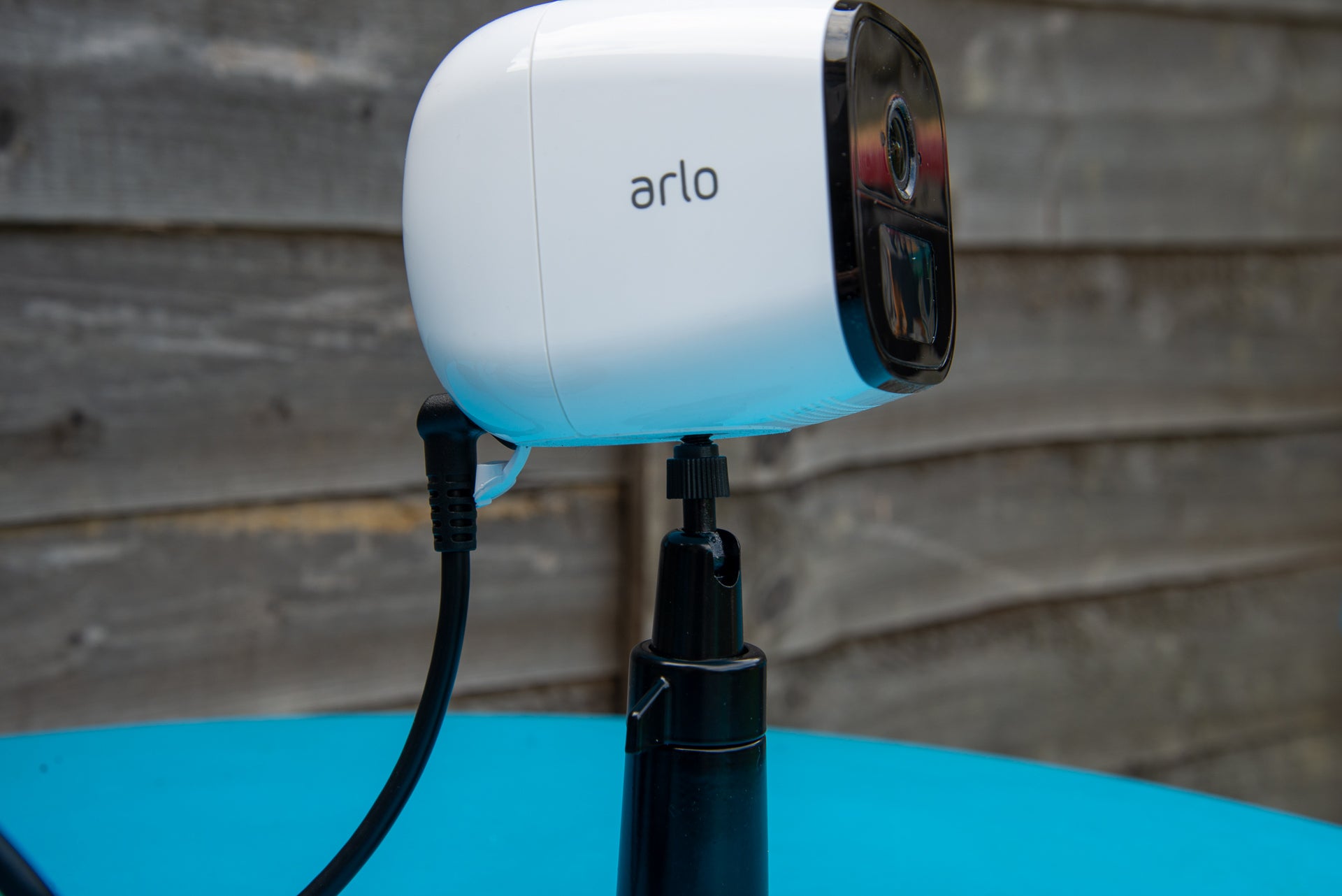
The outdoor USB cable makes it easier to constantly power the camera
If you can’t power the camera, the only way to get activity zones is to upgrade to an Arlo Smart plan (from £1.99 per camera), which gives you Cloud Activity Zones. With these, the camera uses its PIR motion sensor to wake up and start streaming video, but cloud processing examines where the motion has taken place and only saves the video and sends a notification when motion is detected inside a zone.

Activity zones can help cut down on the number of notifications that you get
As clever as this is, you need to still place your camera carefully with this mode, as areas with a lot of motion can wake the camera up and drain its battery fast, even if you have relatively few recordings.
The second advantage of Arlo Smart is that you can use smart notifications to choose what you get notified about, picking your combination of people, animals and vehicles. By restricting my Arlo Go with Cloud Activity Zones and selecting people only, I got comparatively few notifications.
As to whether the Arlo Smart plan is worth the money or not, it depends on how the camera will be used. If you have it running on battery power and you’ll use it a lot, then Arlo Smart is a decent upgrade; if you use the Arlo Go irregularly and have it on battery power, then the free option is the best.
Placing the camera where you want it is easy thanks to the flexible stand in the box. This can be placed on a table, although it’s a little wobbly, or you can mount it permanently, screwing it to a wall or fence.

The provided stand give you some flexible placement options for the camera
As this is a portable product, and the chances are that you may need to reposition the Arlo Go. If you do, just remember to check the app to check that your activity zones are still covering the areas you want. There’s also a handy utility to help you test the camera’s motion detection: when turned on, the camera’s LED lights yellow to let you know that it’s picked up movement.
You can also turn on sound notifications, which makes the camera record when it picks up loud enough sounds. This feature’s not great outside – it tended to go off a lot where I live – but works well inside a quiet house.
The Arlo Go has the most powerful modes to control when it can and can’t record
The Arlo app is brilliant for defining when your camera can and can’t record. There are two default Modes for doing this: Armed (the camera records when there’s motion) and Disarmed (the camera ignores motion). While you can set these manually, you can automate these modes using a Schedule or Geofencing to turn your cameras on when you go out and off when you get home.
Impressively, when you get home, you can set the Arlo Go to revert to a schedule. That way, you can, for example, have your camera turn on when you go out, off when you get home but always have it turn on to record at night when you’re in bed. No other camera system offers quite the same range of features.
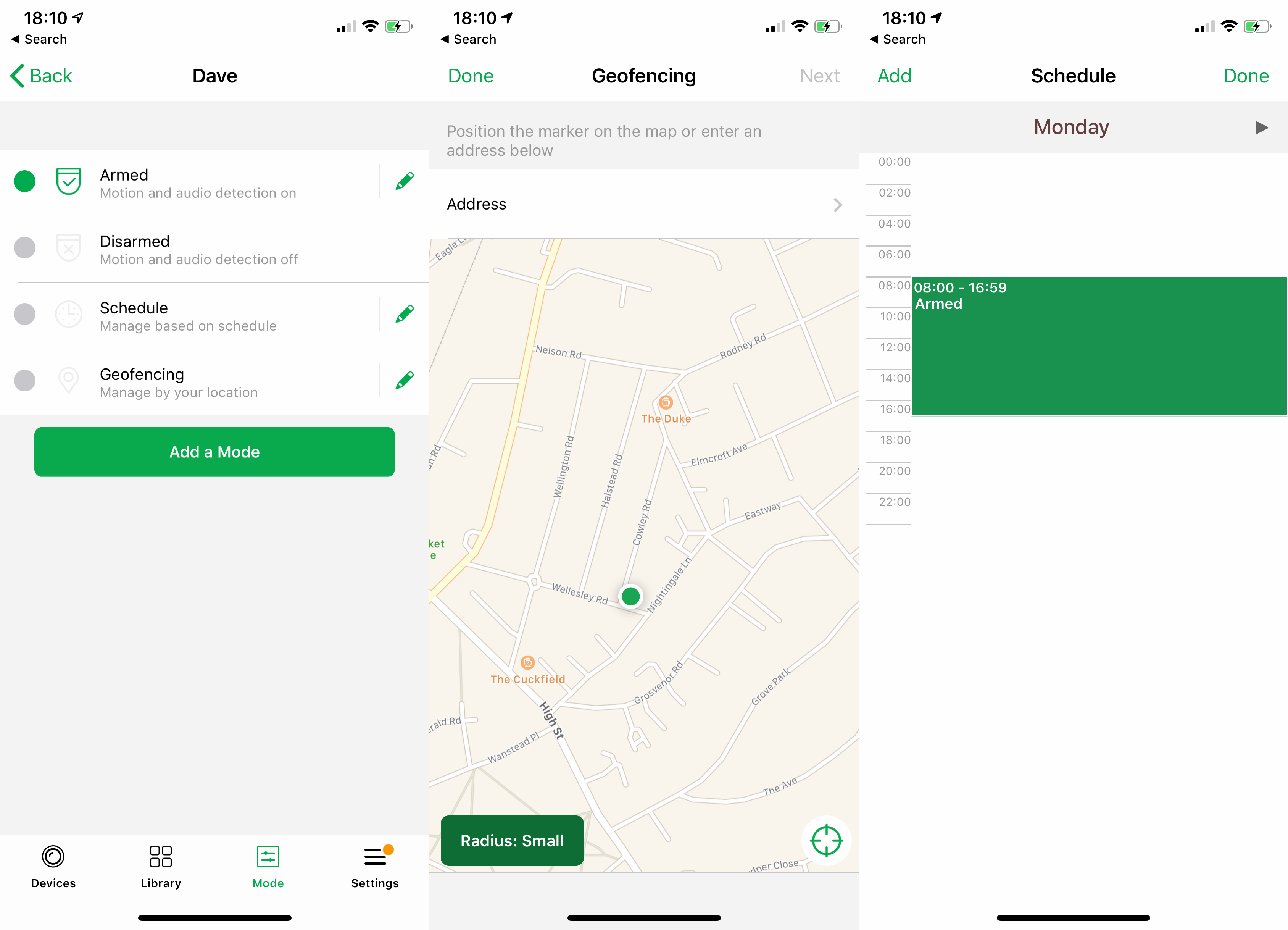
The modes let you control exactly when you want your camera to record
Just be careful with Geolocation if you travel with your camera, as you’ll need to reset your home location when you get to your destination to make the feature work reliably.
Video quality is good enough at maximum but can suffer on lower-quality settings
The video quality setting is in the Power Management section of the app. Best Battery Life reduces video quality to the point where it’s a bit fuzzy and low resolution at just 416×240, so go with Best Video where you can, which gives you the camera’s full 720p resolution.
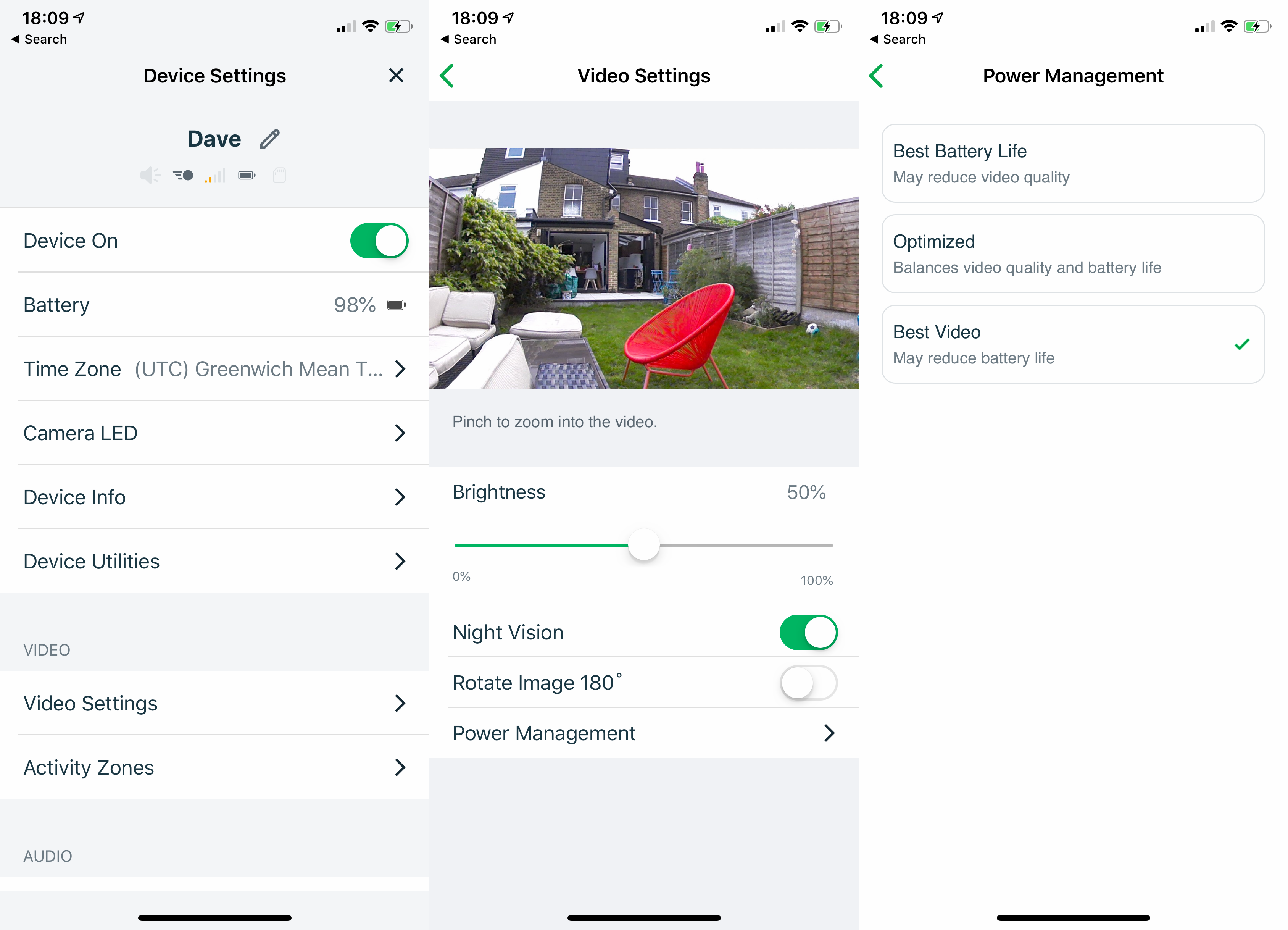
Video quality affects battery life but we recommend going for the highest-quality setting anyway
During the day, I found that the highest quality video produced good enough footage. There’s a fair amount of compression in the image, which makes some parts of the picture a little soft and you lose finer detail. However, you can clearly spot individuals and make them out in the footage, finding a still frame with the maximum amount of detail.
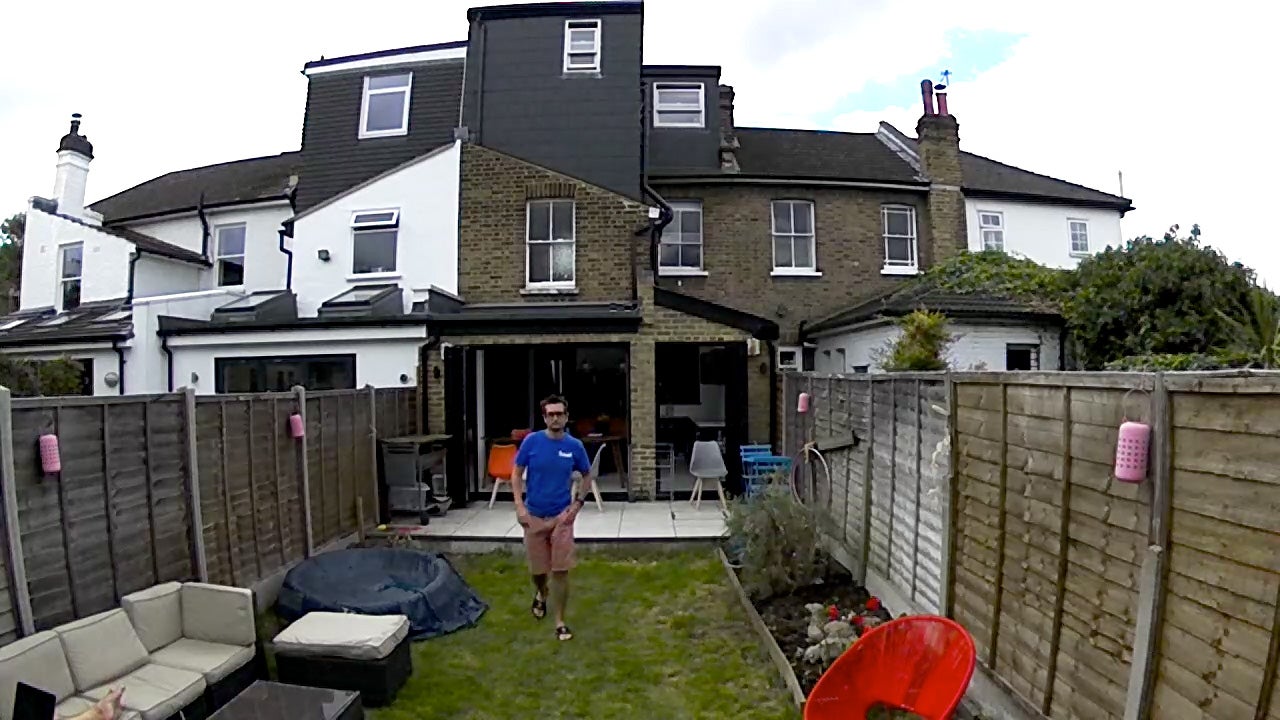
Daytime footage is pretty good and it’s easy enough to find a still frame with plenty of detail in it
At night, the camera turns on its IR lights to brighten up the night. This makes the image a lot softer and harder to see. While you can still tell the difference between people, working out individual features for identification is harder, and I found it tricky to find a still frame with enough sharpness around a moving person.
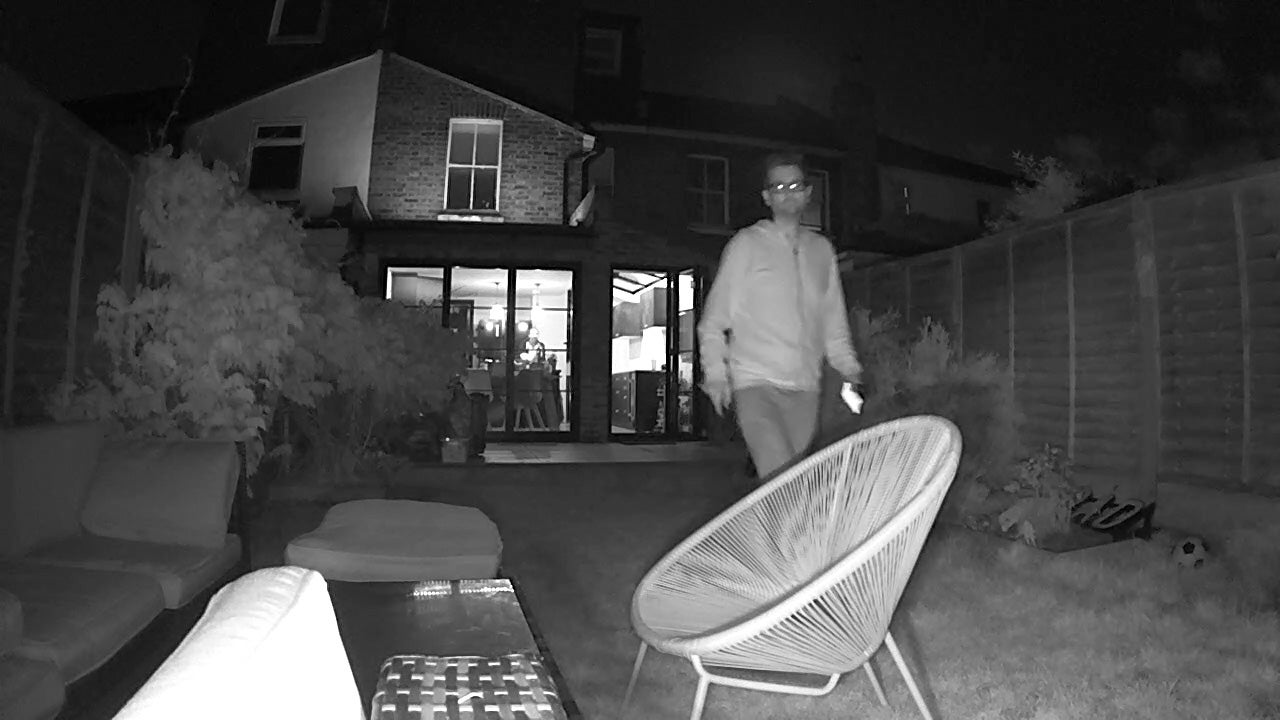
At night you can see what’s going on but it can be hard to find a still image with plenty of detail in it
Running on maximum quality, I estimated that my camera would last for around two months on a single charge; how often the camera is triggered will affect this, so take this figure as a guide only.
You can scare people off with the two-way chat feature but the siren is weak
There’s a two-way chat feature, so that you can have a conversation with anyone that you see. With this camera, you have to press and hold the microphone on the app display to talk. The Arlo Go’s speaker is loud enough to have a chat, and it can be useful for warning off someone that you’ve seen in your camera feed.

Two-way chat is useful but the siren option is a bit weedy
There’s also a built-in siren, although this just uses the Go’s internal speaker, so it’s a bit weedy. It will draw attention, but it’s not the ear-shattering noise that will scare someone off.
The Arlo Go has plenty of smart assistant integrations and works with SmartThings, too
You can use the Arlo Go with smart displays, including the Amazon Echo Show and Google Nest Hub, to show the video feed. That’s all the control that you get, and you can’t arm or disarm your camera on either system.
With SmartThings integration, you can view your camera’s feed in the app, but you can also use its sound and motion detection sensors to trigger other devices, say turning on a light when your camera picks up motion. There’s a switch in the SmartThings app to turn the camera on or off, but this doesn’t change the mode, it only affects whether the camera is monitored by SmartThings.
There’s also an IFTTT channel that lets you trigger other devices when the camera picks up movement. Plus, you can arm or disarm your system, which is handy if you want to build other rules to control when the Arlo Go records, such as having a button by the front door to disable motion detection when you come home.
Should I buy the Arlo Go?
If you need to monitor somewhere that doesn’t have Wi-Fi access, such as a caravan, boat or a car, then the Arlo Go’s LTE connection provides something that other cameras don’t have, letting you monitor practically anywhere.
Free cloud storage is nice to have, although you have to factor in the cost of the 4G SIM card that you need to run the camera, and you’ll either need to place the camera carefully, plug it in permanently or upgrade to the Arlo Smart plan to reduce the number of motion notifications that you get.
There are issues with the camera, too. The lack of Wi-Fi or even Bluetooth means that you can’t just use the Arlo Go locally when you need to and it has to have a strong enough mobile signal to do anything with it.
With its 720p resolution, the footage is good enough at maximum to see what’s going on but lags behind Full HD or higher resolution models. It’s also hard to get past the price, and this is a very expensive security camera.
This all adds up to make a security camera that’s highly configurable and flexible but also very niche. If you need portable security it’s a great choice, but if you can get Wi-Fi, the Arlo Ultra or Nest Cam Outdoor models will make more sense.


